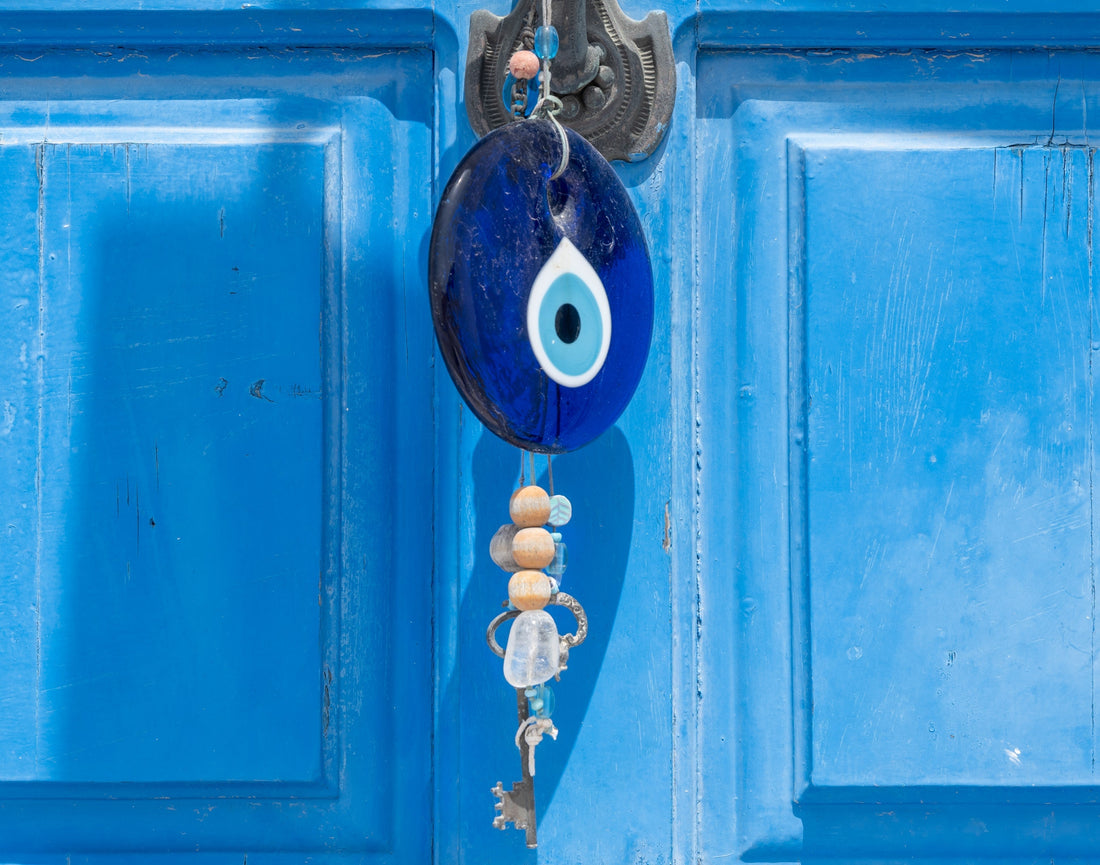Nestled in the rich tapestry of Greek folklore and tradition lies an enigmatic emblem—the Evil Eye. Revered for its power to both harm and protect, this symbol has woven its way through generations, captivating the imagination and inciting beliefs steeped in mysticism.
Origin and Essence: The mythos of the evil eye
The Evil Eye, known as "mati" (or "Μάτι" in Greek), traces its roots back to ancient civilizations, where it was believed that certain individuals possessed the ability to cast curses merely by gazing malevolently at others. This potent glare was thought to bring misfortune, illness, or calamity upon the recipient, often without the caster's conscious intent.
In Greek culture, the Evil Eye is regarded as a pervasive force, capable of inflicting harm upon anyone—rich or poor, revered or ordinary. Its origins are intertwined with tales of jealousy, envy, and the innate human fear of the unknown. The superstition transcends borders, extending its influence across the Mediterranean, the Middle East, and beyond.
Symbolism and Protection: Warding Off Malevolence
To counter the pernicious effects of the Evil Eye, a plethora of protective talismans emerged, each bearing unique symbolism and revered efficacy.
1. Blue Eye Amulets (Matiasma): The most prevalent form of defense against the Evil Eye in Greece is the "mati" amulet—a small, blue-eyed charm crafted from glass or stone. Its striking blue hue is believed to mimic the color of the sky, deterring malicious gazes and deflecting negativity.
2. Nazar Charms: The Nazar, an eye-shaped amulet originating from Turkish culture, is also prevalent in Greece. Adorned in jewelry, incorporated into household décor, or worn as pendants, these charms serve as a shield against the malevolent gaze.
3. Rituals and Incantations: Beyond physical talismans, rituals and incantations have been practiced for centuries to ward off the Evil Eye. Ceremonies involving prayers, burning herbs like sage, or performing symbolic gestures remain embedded in Greek customs to safeguard against its influence.
Enduring Beliefs: The Modern Reverence for Protection
Despite technological advancements and societal evolution, the belief in the Evil Eye endures in contemporary Greece. It persists as an integral facet of cultural identity, finding expression in art, literature, and daily life.
1. Cultural Artifacts: The Evil Eye’s symbolism permeates modern Greek aesthetics, featuring prominently in jewelry, pottery, textiles, and architecture. Its presence is a testament to the enduring reverence for ancient beliefs.
2. Personal Beliefs: Many Greeks, even those not strictly adherent to superstitions, often carry a protective talisman or practice subtle rituals to safeguard against the perceived malevolence of the Evil Eye, reflecting a fusion of tradition and personal belief.
3. Tourist Fascination: Beyond local customs, the allure of the Evil Eye captivates tourists, who seek out these iconic symbols as souvenirs, intrigued by the mystical aura and the cultural significance embedded within.
Legacy and Cultural Significance
The Evil Eye persists as more than a superstition—it embodies a cultural legacy, a testament to the enduring power of belief and tradition. Its existence in Greek society transcends mere folklore; it serves as a bridge connecting the past and present, uniting generations through shared customs and protective rituals.
In a world driven by scientific rationality, the mystique of the Evil Eye endures, its essence woven into the fabric of Greek identity—a potent reminder of the complexities and enduring allure of ancient beliefs.
The Evil Eye remains a symbol not only of caution but also of cultural richness and resilience—an emblematic thread weaving through the tapestry of Greek heritage, forever etched in the collective consciousness of its people.

